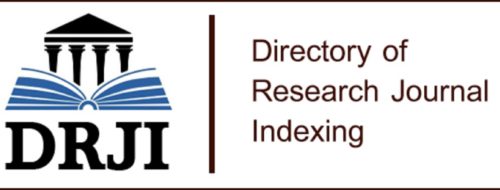EVALUATION OF THE IMPLEMENTATION OF TOOLS AND TECHNOLOGIES OFINDUSTRY 4.0 AT THE TECHNICAL UNIVERSITY OF MANABÍ
Keywords:
Industry 4.0, Smart University, 4.0 Technology, 4.0 EducationAbstract
DOI: https://doi.org/10.46296/ig.v8i15.0244
This study analyzes the adoption of Industry 4.0 technologies at the Universidad Técnica de Manabí (UTM), highlighting key benefits, challenges, and strategies. The main benefits include resource optimization, cost reduction, improved educational quality, increased operational efficiency, and contributions to environmental sustainability through real-time monitoring. However, significant challenges are identified, such as the need for robust infrastructure, continuous staff training, and overcoming resistance to change. Financial and human resource limitations also present barriers to consider. The study proposes strategies such as gradual implementation, investment in technological infrastructure, and collaborations with tech companies. It also emphasizes the importance of continuous education and innovation in forming specialized human capital, providing a reference framework for other universities aiming to implement advanced technologies.
Keywords: Industry 4.0, Smart University, 4.0 Technology, 4.0 Education.
References
Barros, La Industria 4.0: Aplicaciones e Implicaciones, Sevilla: Universidad de Sevilla, 2017. [Online]. Available: https://www.springerprofessional.de/en/concept-and- diffusion-factors-of-industry-4-0-in-the- supply-chai
Cell Gene Ther. Insights, vol. 2, no. 2, pp. 263-270, 2016.
D. Barzallo Núñez y D. Basantes Montero, “Análisis de la innovación tecnológica avícola ecuatoriana en el contexto de Industria 4.0,” Revista Investigación Tecnológica, vol. 7, pp. 1-15, 2020.
Gupta et al., "ERP Systems in the Educational Environment," International Journal of Technology,vol. 3, pp. 34-45, 2014.
J. Branke, S. Farid, y N. Shah, “Industry 4.0: A vision for personalized medicine supply chains,”
J. Pfohl, B. Yahsi, y T. Kurnaz, “Concept and diffusion-factors of Industry 4.0 in the SupplyChain,” Dynamics in Logistics, 2017.
K. Schwab, “The Fourth Industrial Revolution: what it means, how to respond,” World Economic Forum, 2016. [Online]. Available: https://www.weforum.org/agenda/2016/01/the-fourth-industrial-revolution-what-it- means-and-how-to-respond/.
L. Alpala, M. M. Alemany, D. Peluffo, F. Bolaños, A. Rosero y J. Torres, “Methodology for the design and simulation of industrial facilities and production systems based on a modular approachin an ‘industry 4.0’,” DYNA, vol. 85, no. 207, pp. 243-252, 2018.
L. Bearzotti, “Industria 4.0 y la Gestión de la Cadena de Suministro: el desafío de la nuevarevolución industrial,” Gaceta Sansana, vol. 3, no. 8, 2017.
M. Veintimilla Andrade, J. G. Veintimilla Andrade y J. M. Chisin Malán, “Sistemas de Gestión Integral de Información en el Contexto de una Universidad Inteligente: Impacto y Eficacia en los Procesos Académicos y Administrativos en la Era de la Industria 4.0,” RECIAMUC, vol. 7, no. 2, pp. 241-251, 2023.
R. Blanco, J. Fontrodona, y C. Poveda, “La industria 4.0: el estado de la cuestión,” Revista Economía Industrial, vol. 406, pp. 151-164, 2018.
S. Coşkun, Y. Kayıkcı, y E. Gençay, “Adapting Engineering Education to Industry 4.0 Vision,” Technologies, vol. 7, no. 1, pp. 10, 2019.
Ziemba y Oblak, “Sistemas de Información Gerencial: Revisión y perspectivas,” Journal of Management Studies, vol. 45, no. 3, pp. 123-145, 2013.
Published
How to Cite
Issue
Section
License
Copyright (c) 2025 Scientific Journal INGENIAR: Engineering, Technology and Research

This work is licensed under a Creative Commons Attribution-NonCommercial-ShareAlike 4.0 International License.

















